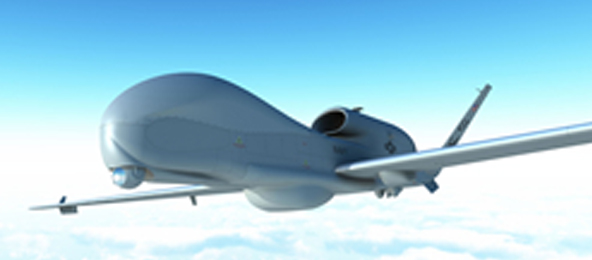Pentagon acquisition chief Ashton Carter has sliced 11 Block 30 Global Hawks from the planned buy of 42, further reducing the total number of the aircraft in the project only months after the U.S. Air Force cut 11 from the Block 40 programme.
The decision is outlined in a June 14 acquisition decision memorandum that details a restructuring of the entire RQ-4A/B programme; this includes all four blocks of the aircraft (10-40). Also in this document, Carter outlines his plans to certify that the Global Hawk may move forward despite its latest cost overrun, which breached the Nunn-McCurdy statute limits and triggered a massive review of the project. He states that “continuation of the programme is essential to national security . . . there are no alternatives to the programme,” and new cost estimates have been established to move forward.
An April selected-acquisition report sent to Congress that includes the Global Hawk cost overrun notes a total programme tally of $13.9 billion. The Cost Assessment and Programme Evaluation (CAPE) pegs the new price at $12.4 billion, according to Carter’s memo. Northrop Grumman is the prime contractor, with Raytheon playing a role in some sensor work.
Carter also directs the Air Force to break up the massive project into sub-programmes: one each is outlined for “Baseline,” or Block 10/20; Block 30 (with the Enhanced Integrated Sensor Suite and Airborne Signals Intelligence Payload); and Block 40, including the aircraft and the Multi-Platform Radar Technology Insertion Programme active, electronically scanned array ground surveillance system. A new sub-programme will be established for the Ground Segment Re-Architecture and Communications Systems Re-Architecture, Carter says in his memo.
The intent is to more clearly account for the numerous different efforts in the Global Hawk programme by breaking them out into separate line items. These different projects were the by-products of the earlier “spiral acquisition” strategy, which called for infusing new technologies—such as sensors—into the programme when they became mature. However, some in Congress have found these efforts difficult to monitor.
Also, this accounting approach is designed to better illuminate any shortfalls. In earlier budgets, Pentagon and industry sources say shortfalls in the spares accounts went unaddressed. They are now being funded, some say, at the sacrifice of total numbers of Block 40 aircraft.
Programme officials appear accepting of the 11-aircraft reduction in Block 30s. These were originally slated to be attrition-reserve platforms, and one programme official notes that the aircraft are lasting longer than expected thus far.
Also included in the acquisition decision memo is a directive from Carter that requires the Air Force to ask his permission before “obligating any funds beyond the specified amounts identified [in his memo], even on existing contracts.”
It is unclear how this could affect the programme’s ability to be agile in responding to urgent warfighter needs. The quick integration of the Battlefield Airborne Communications Node onto two Block 20s, for example, was not originally included in the programme plan. But senior Pentagon officials have praised programme officials for quickly deploying the system, which is helping provide tactical communications to soldiers in Afghanistan.
Source: Aviation Week

